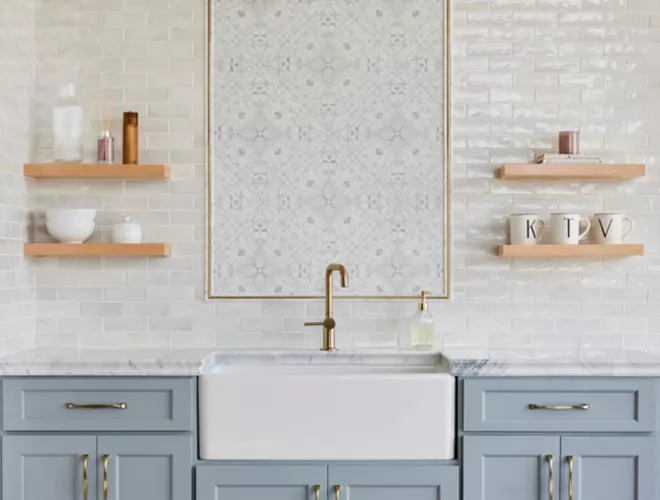Backsplash Tile

Redo Your Backsplash Tiles for an Easy Home Update
Modernizing your home is as simple as updating yourkitchen or bathroom backsplash.It allows you to add a pop of color, a distinct shape or a stand-out pattern to your room—and it’s a quick and easy DIY project. Go bold with a fun mosaic or classic with asubway tile backsplash.
Bold or Subtle, Express Your Style With Color
You can't go wrong with a classic, white tile backsplash, but this design element offers the perfect opportunity to take a little risk — and have a little fun! Create a dramatic contrast to light cabinets with bold, dark backsplash tile, or brighten up a dark room with an unexpected pop of color. If you can't choose just one, a colorful mosaic tile backsplash has it all.
Add Interest and Movement With Shape
Once you choose your color, you’re ready to decide on shape. If you’ve opted for a neutral color palette, a unique shape is a great way to add visual interest to your space. From rectangular subway tiles and squares to penny rounds, hexagons and arabesque tile, your backsplash will come alive with shape.
Choosing the Right Material for Your Backsplash
The Tile Shop has a wide variety of materials, including porcelain, ceramic, natural stone, and glass tile to design a backsplash that reflects your style. Each material creates a distinct look full of character and charm. Since backsplashes add an accent or act as the focal point in rooms, this is the perfect time to explore our expansive selection of available tiles.
Add Artistic Accents for a Beautiful Backsplash
Think of your backsplash as a blank canvas just waiting to become a masterpiece. Consider mixing and matching mosaics, accent tiles or patterned tiles. A handmade Zellige tile backsplash with its color variation and surface texture, is truly unique. Contemporary, classic or rustic, explore our selection of tile to create a backsplash as original as you!